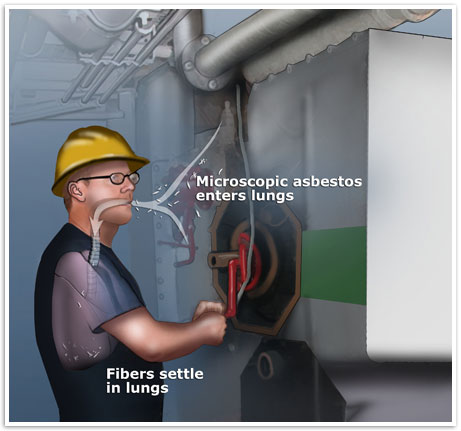Every so often I have guest bloggers present articles for my readers. Today’s article has been written for you by Brian Turner. Brian, who has been working with the Mesothelioma Cancer Alliance as an environmental health and toxic substance safety advocate since June of 2007, brings a wealth of knowledge about environmental health risks, environmental carcinogens and green building.
Take the time to read the article below about asbestos and the potential dangers that it presents, and if you have any further questions I’m sure Brian would be happy to answer them! You can reach him on Twitter or by email at (bturner@mesothelioma.com).
Asbestos Poses Risk to Do-It-Yourselfers
By: Brian Turner
With television shows and internet sites making renovations and household projects easier for the average homeowner to tackle, it becomes more important than ever for the general public to be aware of dangerous toxins like lead paint and mold. Another deadly threat, especially in older homes, comes from building materials that contain asbestos.
A natural mineral that resists high temperatures and decay, asbestos is often found in products encountered while repairing vehicles or remodeling homes. Regardless of its source, asbestos can damage the lungs of anyone who inhales its tiny fibers. Symptoms often occur years after exposure and can be deadly.
Why is it dangerous?
People often inhale asbestos particles without being aware of their existence. Because the microscopic fibers form scar tissue in the lungs, victims experience breathing problems. Symptoms result from both first and second-hand exposure, putting those who smoke or have respiratory ailments at additional risk. While there are regulations to limit exposure in the workplace, do-it-yourselfers and home improvement enthusiasts have fewer guidelines to protect them.
How do employers prevent exposure at work?
According to OSHA, also known as The Occupational Safety and Health Administration, employers must protect workers in three areas when asbestos is involved:
• Shipyards
• Construction sites, including repairing, remodeling, building or demolishing
• Industries, including vehicle repairs, manufacture of asbestos products or custodial work
Asbestos exposure falls into four separate classes:
• Class 1 – the removal of asbestos applied to insulation or products for thermal purposes
• Class 2 – the removal of non-thermal asbestos applications, including roofing and flooring
• Class 3 – the upkeep and repair of areas where asbestos products have been disturbed
• Class 4 – janitorial care in spaces contaminated by asbestos debris
OSHA also has special formulas to make sure employees do not exceed recommended exposures during given periods of time.
What can homeowners do to ensure safety?
According to Mike Holmes, building contractor and star of the HGTV program “Holmes on Homes,” people who work on homes often lack information about dangers lurking in toxic building materials. To further complicate matters, even experienced contractors who know better sometimes forego protective gear, endangering employees and residents by failing to properly prepare and inform them. Procedures are tedious; safety equipment is bulky and expensive; nevertheless, its use should be mandatory.
Recent research examining mesothelioma in Western Australia from the years 1960 to 2008 suggests that cases of the asbestos-related cancer has grown as DIY renovations have become increasingly more popular. Added to the alarming trend is the data that extended exposure is not necessary for negative health outcomes.
Now that long-term studies show how dangerous the renovation of older homes can be, the importance of making that information available to the general population is crucial. If not, there is likely to be another wave of mesothelioma in the decades to come. Anyone who undertakes a project involving asbestos should consult federal safety guidelines and follow them closely.
Article written by: Brian Turner
Thanks again Brian and for those of you that are curious about the Canadian regulations in the workplace, check out this link and I will be providing more information on this in an upcoming blog.
